 Melissa Anderson
Melissa Anderson
William Greaves’s 1972 documentary chronicles a vital moment in the Black liberation movement.
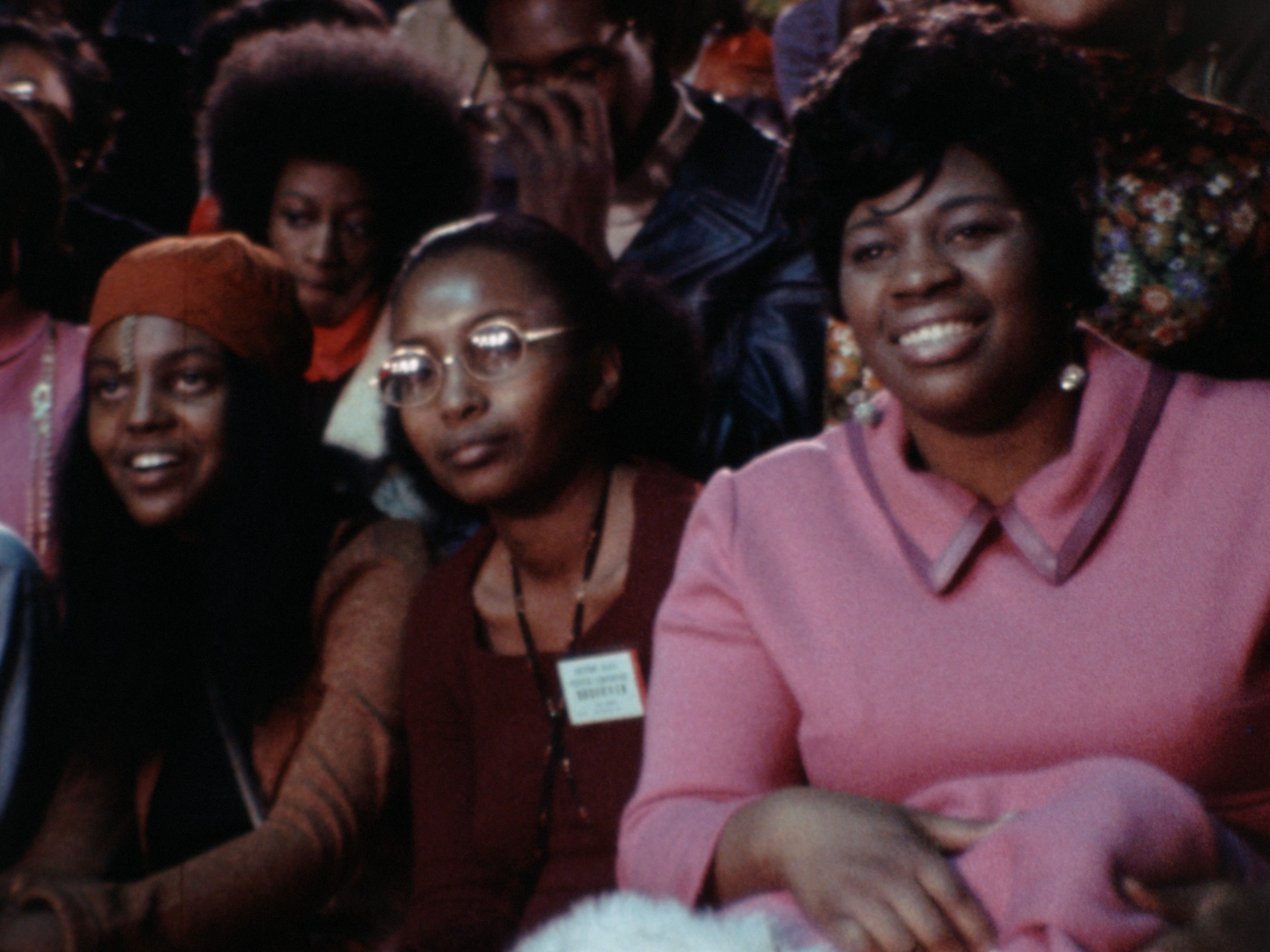
Nationtime. Courtesy Kino Lorber.
Nationtime, directed by William Greaves, available to watch now via Kino Marquee and to stream on the Criterion Channel beginning
February 22, 2021
• • •
In the summer of 1968, William Greaves, then forty-two, shot Symbiopsychotaxiplasm: Take One, an exhilarating, destabilizing amalgam of cinema verité and experimental narrative. Greaves not only helmed this protean endeavor but performed in it, too, playing a director-as-provocateur who must contend with a mutinous multiracial crew and oversee various duos auditioning for the roles of squabbling spouses, their marital meltdowns often erupting in Actors Studio–style histrionics. (The Harlem-born Greaves, who began acting with the American Negro Theater, joined the famed Method lab in 1948; frustrated by the lack of roles for African Americans, he switched to working behind the camera in the 1950s, training at the National Film Board of Canada.) A still-stunning film-within-a-film-within-a-film, this matryoshka-doll movie wouldn’t have a proper theatrical release until 2005. In a constant state of free fall, Symbiopsychotaxiplasm ranks among the headiest movies about the folly of the film set and remains the work for which Greaves, who died in 2014, at age eighty-seven, is best known.
The same year that Greaves filmed Symbiopsychotaxiplasm, he also embarked on a very different kind of project. He directed, produced, and cohosted the initial episodes of Black Journal, an hour-long newsmagazine that aired on public television—the first nationally broadcast program devoted to African American life, one in which an interview with Nina Simone might follow a segment on African Americans running for public office. (Greaves remained with the show, which concluded in 1977, until 1970.) This past summer, the American Archive of Public Broadcasting made Black Journal available to stream for the first time, giving an opportunity to catch up with the contributions of one of the most prodigious, if underrecognized, chroniclers of Black history, politics, and culture. The recent restoration of Greaves’s Nationtime—a little-seen record of the National Black Political Convention held in Gary, Indiana, the weekend of March 10–12, 1972—provides an even fuller picture of the filmmaker’s oeuvre, which would later include documentaries on the civil-rights luminaries Ida B. Wells and Ralph Bunche.
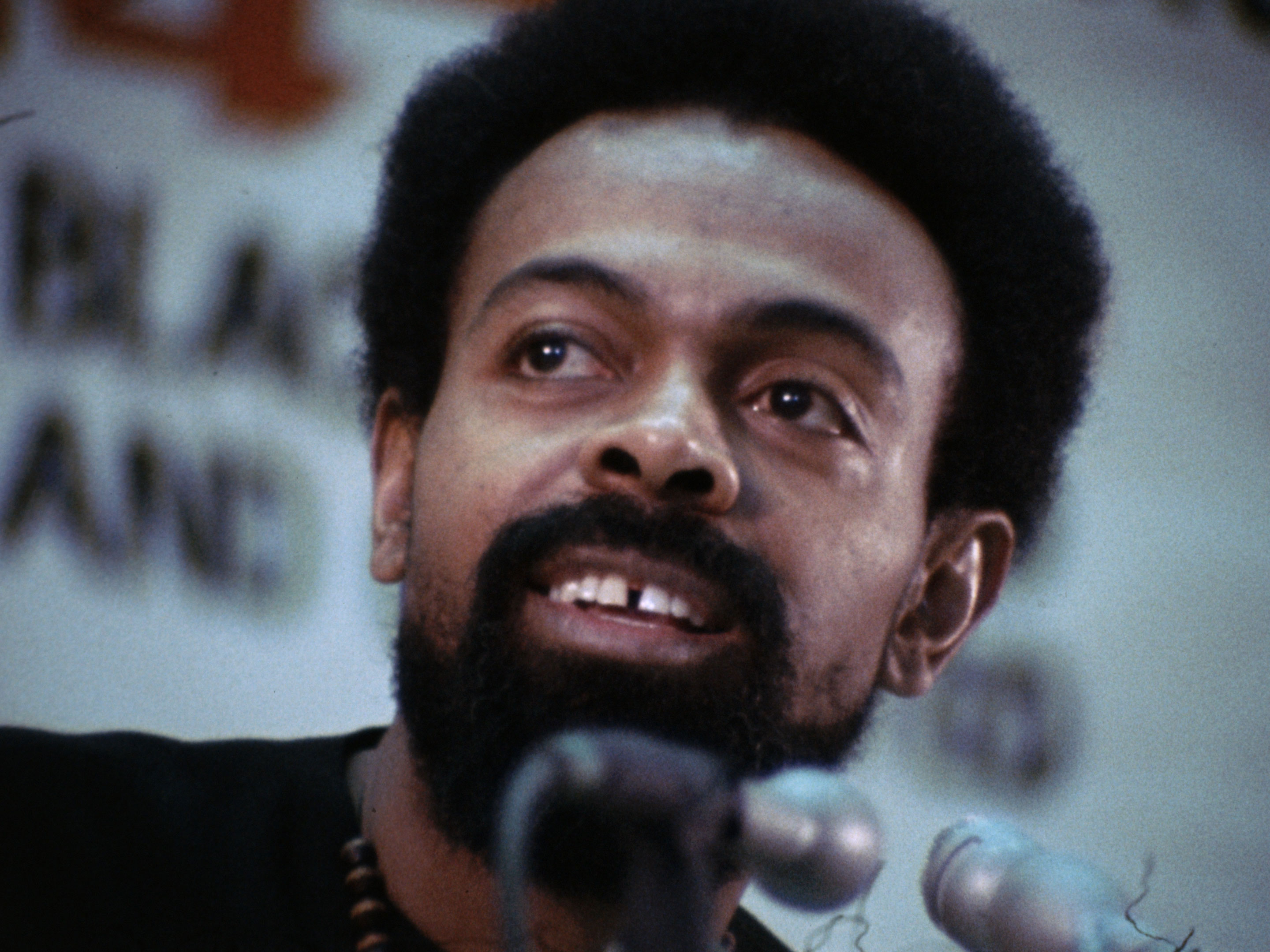
Amiri Baraka in Nationtime. Courtesy Kino Lorber.
Although Nationtime hews closely to the conventions of nonfiction filmmaking—a fly-on-the-wall perspective dominates—the documentary showcases Greaves’s gifts for capturing the ways that energy shifts and ricochets among groups of people, a talent earlier demonstrated in Symbiopsychotaxiplasm. Amiri Baraka, one the convention’s cochairs, had approached Greaves about filming the event, which brought together nearly ten thousand African Americans across the political spectrum—from Republicans to socialists to Black nationalists, from elected officials to Black separatists—to develop an ambitious agenda for all Black Americans. An opening montage of bumper stickers on the cars parked outside Gary’s West Side High School, where the assembly was held, offers a glimpse of the attendees’ various concerns: “Free Angela Davis” reads one, “WVOL 1470: ‘Soul Motivation Radio’ ” another.
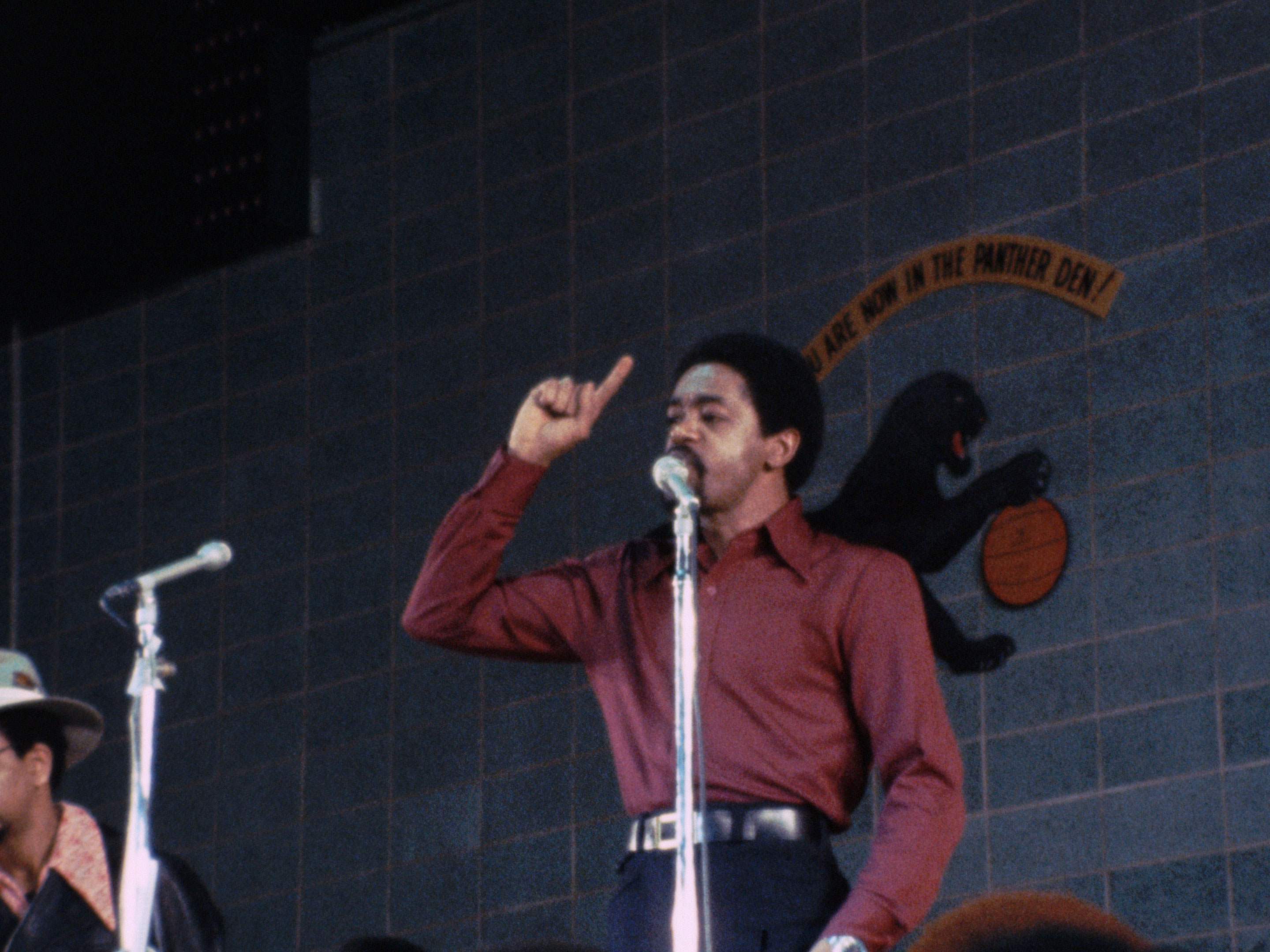
Bobby Seale in Nationtime. Courtesy Kino Lorber.
On a raised stage in the West Side gymnasium, a multitude of banners and pennants behind him, Gary’s mayor, Richard G. Hatcher, addresses the delegates. (Later, Greaves has some fun with the gym’s décor when Bobby Seale speaks, cutting to a flag with a feline mascot that proclaims: YOU ARE NOW IN THE PANTHER DEN!) “To understand where we are going, we must probe our bitter past,” exhorts Hatcher, one of the first Black mayors of a major US city and another of the convention’s three cochairs (Congressman Charles C. Diggs of Michigan was the third). “We must emerge from this convention with . . . a dynamic program for Black liberation that in the process will liberate all America from its current decadence,” Hatcher, with the mien of a college professor, continues. That decadence includes not only “the atrocious war” still being waged in Vietnam but also drugs; the mayor’s call for the immediate “eradication of heroin from the ghetto” elicits the loudest applause during his address.
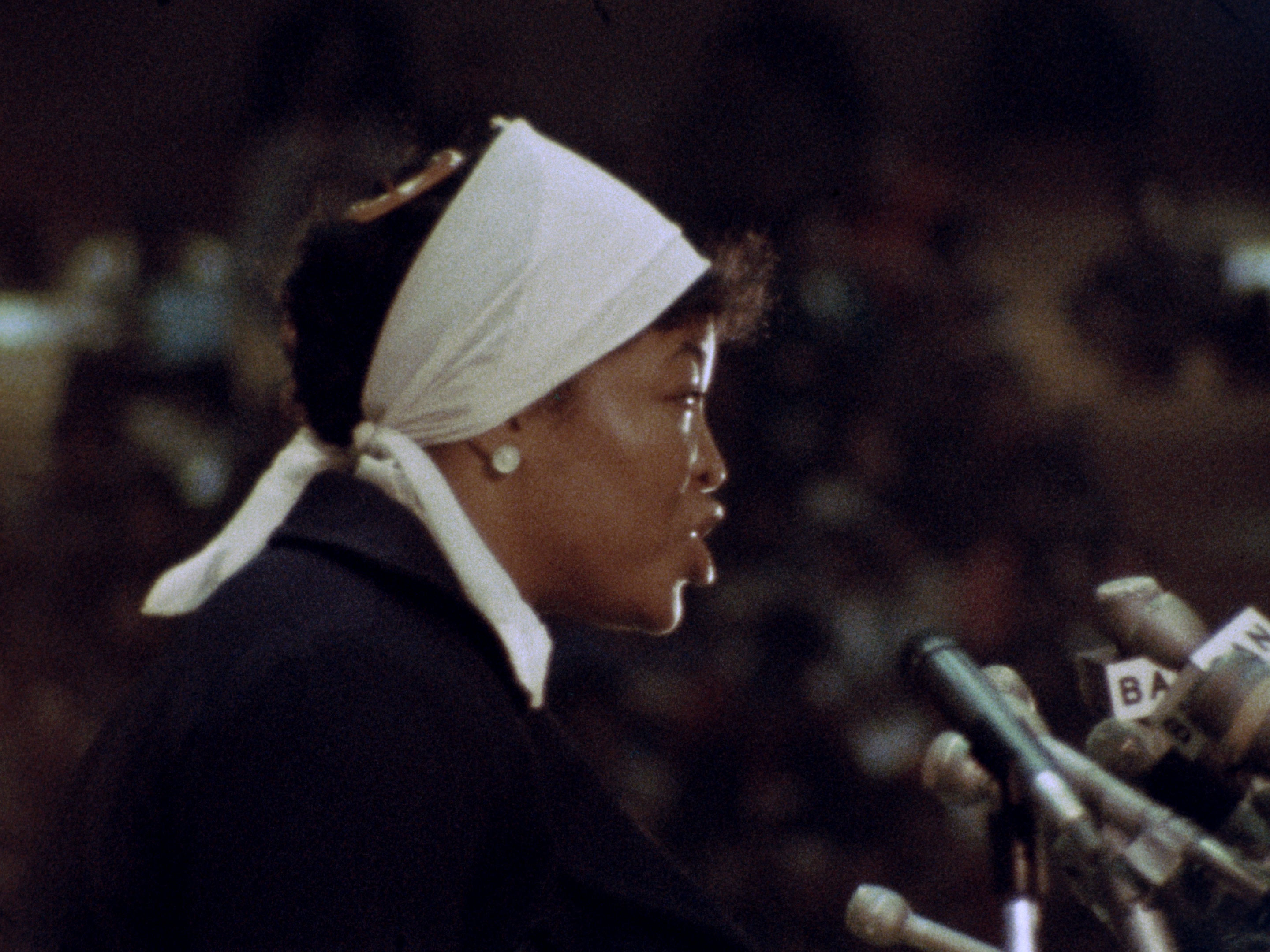
Betty Shabazz in Nationtime. Courtesy Kino Lorber.
The most galvanizing speaker in Nationtime, though, is Jesse Jackson. Introduced by Betty Shabazz, Malcolm X’s widow, Jackson sports—in stark contrast with the suit and tie of Hatcher and others on the stage—hip attire: a tan suede vest over a seafoam-green shirt with a flared collar, an enormous gold medallion resting just above his stomach. The groovy getup highlights Jackson’s youth; although only thirty at the time, he had been a civil-rights stalwart since 1960 and had, less than three months before the convention, founded Operation PUSH (People United to Save Humanity; “Save” was later changed to “Serve”).
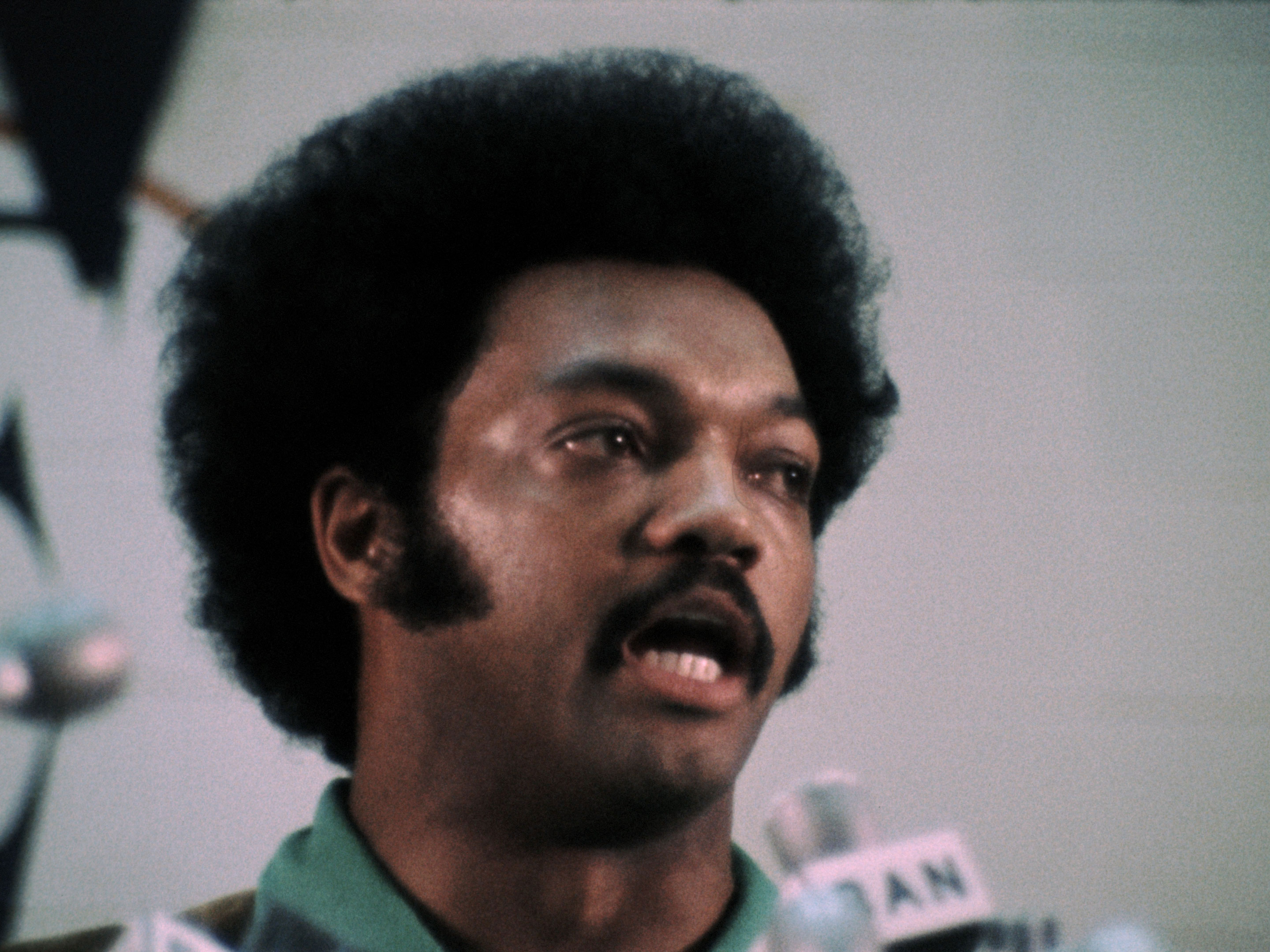
Rev. Jesse Jackson in Nationtime. Courtesy Kino Lorber.
Greaves devotes about twenty of Nationtime’s eighty minutes to Jackson, filming him, shortly after he begins his oration, from high up in the bleachers before zooming in. Ordained a Baptist minister in 1968, Jackson peppers his address with a call-and-response: “What time is it?” he asks the delegates, their ages as varied as their ideologies. “Nation time,” they cheer, with increasing volume and exultation. The enthusiasm doesn’t diminish even when Jackson’s tone turns castigating: “It is bad, it is real bad, to be in a slum. But it is far worse to have that slum in you. . . . Check out your mind.”
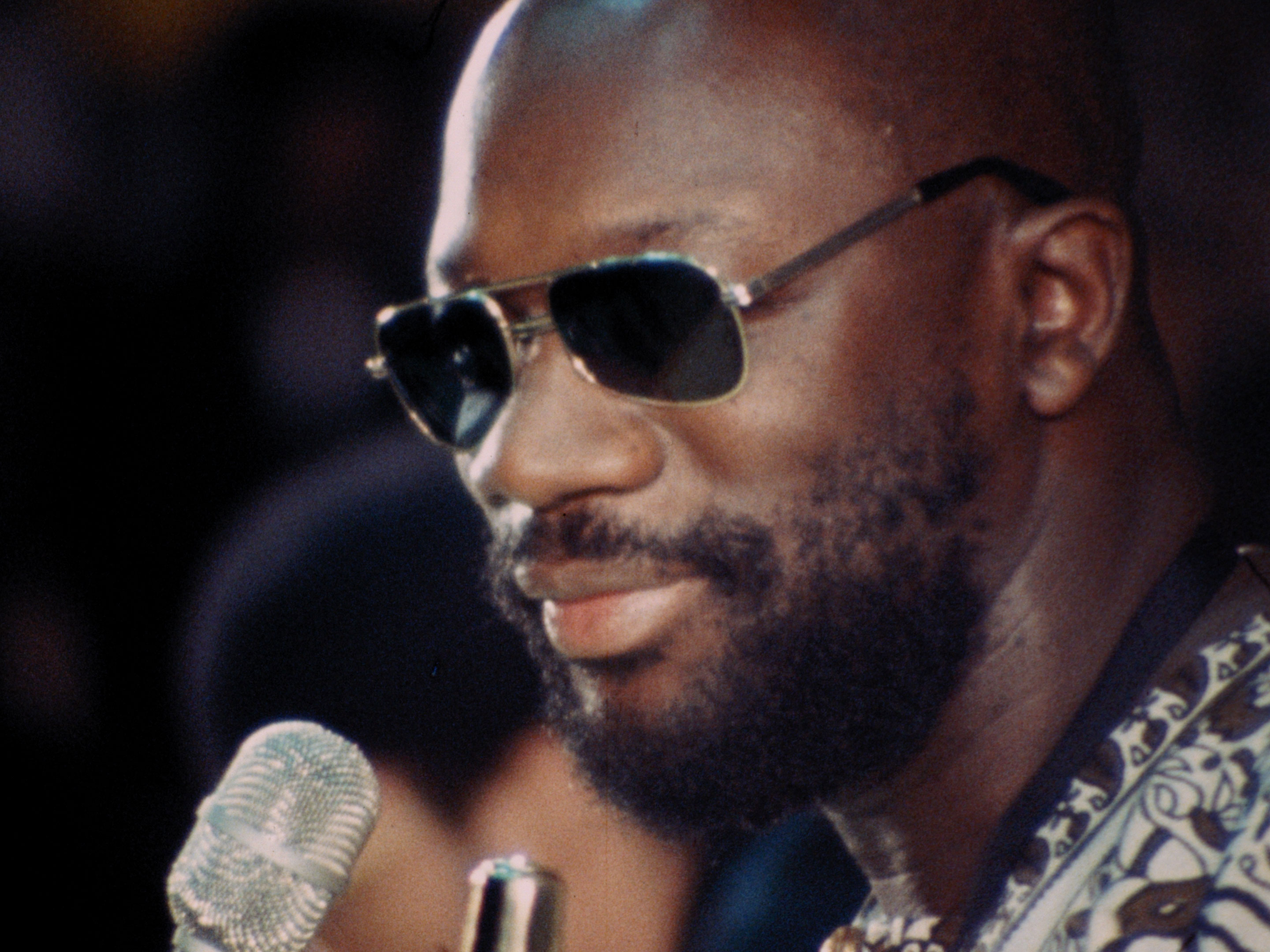
Isaac Hayes in Nationtime. Courtesy Kino Lorber.
Others stirred the crowd without speeches, or, in the case of Richard Roundtree, without uttering a word: the star of Shaft, released the previous summer, simply walks out onstage, pressing the flesh of those who’ve rushed to the front of the platform. The actor is soon followed by the man responsible for Shaft’s soundtrack: a beaming Isaac Hayes, who performs “I Stand Accused.” (Jackson and Hayes also feature prominently in the 1973 documentary Wattstax, a film of the August ’72 concert of the same name and, in its emphasis on Black polyvocality, a companion piece of sorts to Nationtime.) While Hayes’s song plays, Greaves cuts to footage of Shabazz and Coretta Scott King deep in conversation, its inaudibility paradoxically augmenting its fascination.
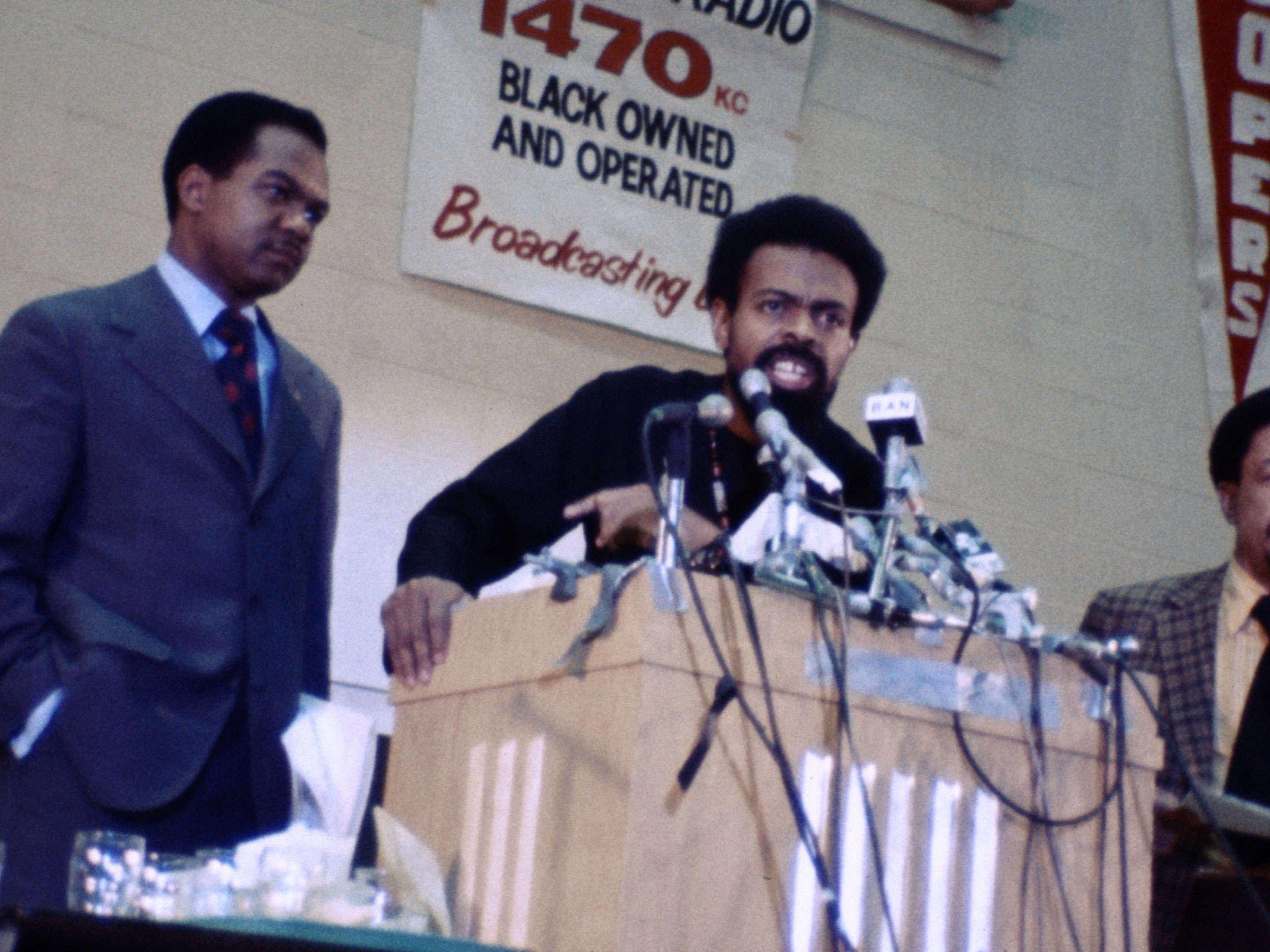
Amiri Baraka in Nationtime. Courtesy Kino Lorber.
Not all the sounds heard from the crowd are approbatory. Baraka must contend with dissenting Michigan delegates who object to New York’s stipulations to “the National Black Agenda.” (Others expressed their displeasure by boycotting the event altogether, notably Congresswoman Shirley Chisholm, outraged that the convention’s organizers couldn’t decide whether or not to support her run for president, announced in January of ’72.) Much of that agenda—which called for, to name just a few of its demands, the elimination of capital punishment, statehood for the District of Columbia, the establishment of national health care, and a guaranteed annual income—remains far from reach, nearly five decades later. But the event in Gary lives on, having served as the inspiration for the virtual Black National Convention organized by the Movement for Black Lives this past August. Greaves’s Nationtime gives that March weekend in 1972 a longer life still.
Melissa Anderson is the film editor of 4Columns.